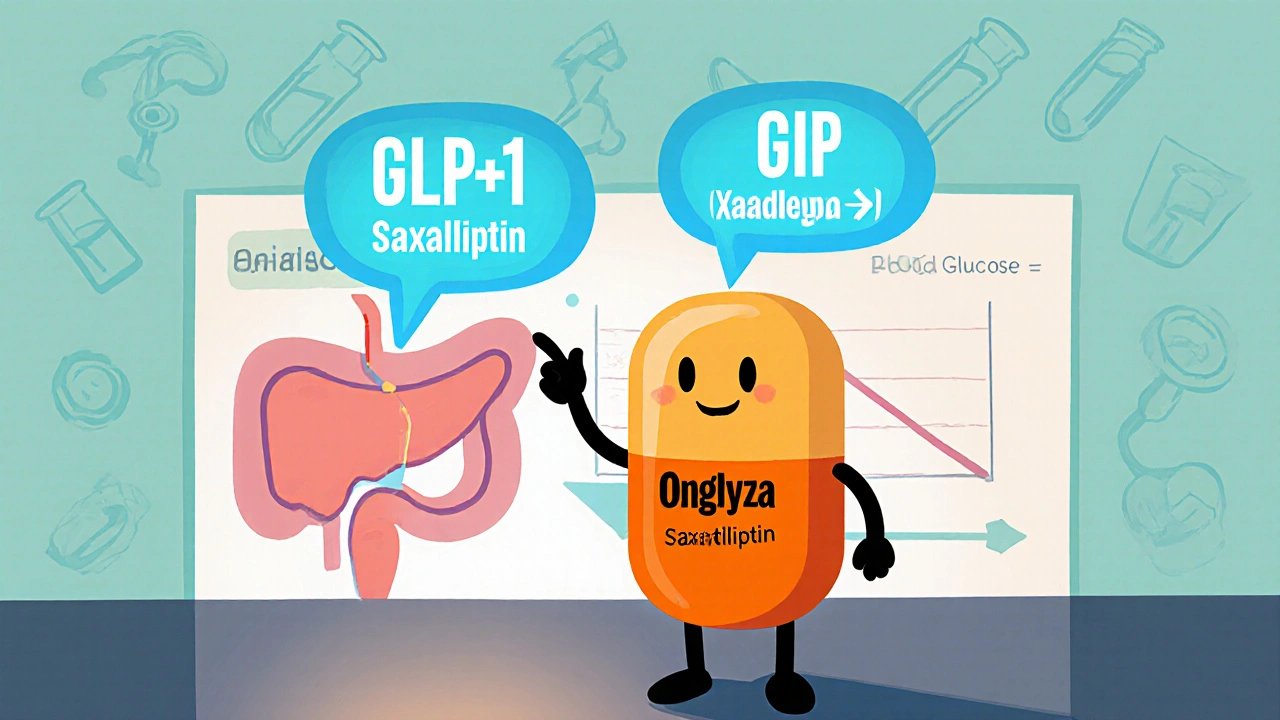DPP-4 Inhibitors – What They Are and Why They Matter
When working with DPP-4 inhibitors, oral drugs that block the dipeptidyl peptidase‑4 enzyme to boost incretin hormones, you’re dealing with a key class of type 2 diabetes, a chronic condition where the body can’t properly regulate blood sugar medication. They work hand‑in‑hand with GLP‑1 agonists, injectable agents that mimic the incretin GLP‑1 to lower glucose and are often compared to SGLT2 inhibitors, drugs that flush excess glucose through the kidneys. By halting DPP‑4, these meds keep insulin‑stimulating hormones alive longer, which helps keep A1C numbers in check without the weight gain you see with some older therapies. DPP-4 inhibitors therefore occupy a sweet spot between effectiveness and tolerability.
How DPP-4 Inhibitors Fit Into Diabetes Care
These agents target the enzyme DPP‑4, stopping it from breaking down GLP‑1 and GIP, two hormones that tell the pancreas to release insulin after a meal. The result is a smoother post‑prandial glucose curve and a modest A1C drop of 0.5‑0.8 %. Because the mechanism is insulin‑independent, the risk of hypoglycemia stays low unless you pair the drug with a sulfonylurea or insulin. Common names you’ll see on prescriptions include sitagliptin, saxagliptin, linagliptin and alogliptin. All share the same core action but differ in kidney clearance, so linagliptin is often chosen for patients with reduced renal function.
When you compare them to SGLT2 inhibitors, the trade‑off becomes clear: DPP‑4 inhibitors avoid the genital‑tract infections and diuretic effects that SGLT2 drugs can cause, but they also lack the modest weight loss and cardiovascular‑mortality benefits seen with empagliflozin or dapagliflozin. Meanwhile, GLP‑1 agonists deliver stronger A1C reduction and weight loss, yet they require injections and can cause nausea. In practice, clinicians layer these classes based on a patient’s comorbidities—adding a DPP‑4 inhibitor when oral simplicity is prized, switching to an SGLT2 inhibitor if heart‑failure risk is high, or moving to a GLP‑1 agonist for obesity management.
Below you’ll find a curated mix of articles that dive deeper into dosing tips, side‑effect management, head‑to‑head drug comparisons, and real‑world patient stories. Whether you’re a newly diagnosed patient, a caregiver, or a health‑care professional, the posts ahead give you concrete actions you can take right now to make the most of DPP‑4 inhibitor therapy.
Onglyza (Saxagliptin) vs. Other Diabetes Drugs: 2025 Comparison Guide
Compare Onglyza (saxagliptin) with top diabetes alternatives in 2025. See efficacy, cost, safety, and tips for choosing the right drug.
Keep Reading
